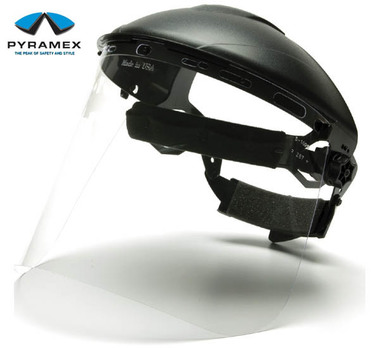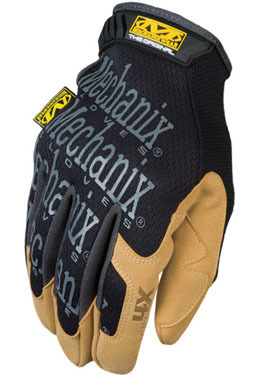Required Safety Gear for Construction Workers
Aug 6th 2018
Construction workers make up a substantial percentage of workers overall at about 5-10% of workers in most first world countries. The United States is no exception. Most positions in construction pay well but can be dangerous. The best way for employers to ensure the safety of their workers is to focus on the following safety equipment items and follow the following safety tips.
There is a long list of different Personal Protective Equipment (PPE) that can be worn to keep workers safe. Workers on a construction site are required to wear, at a minimum, hard hats, safety glasses, and high visibility shirts. If they are working around traffic, they are required to wear a high visibility safety vest as well. In addition to these required safety PPE items they are also required to wear long sleeve shirts, work pants, and either work shoes or work boots.
Other PPE equipment may be required depending on the job and the environment that the employees will be working in. The PPE that is required will be determined by the supervisor once they have performed a preliminary Job Hazard Analysis. The PPE that may be required includes things like protective gloves, hearing protection, full face shields, chemical splash goggles, respiratory protection, fall protection equipment (when worker is working above six feet), welding leathers and flame-resistant clothing (when working with live electric). Just keep in mind that the additional PPE is determined based on the environment you will be working in.
Construction Personal Protective Equipment
Construction PPE is the most important items you will find on a construction job site. The job site and job itself will determine what PPE will be required for the workers. Most of the gear that is used on a construction site will focus on keeping the workers eyes, ears, face, head, feet and hands protected.
Face Protection
 Obviously, the face shield and safety glasses are the main items that will help to protect the workers eyes, mouth, and nose. If the worker happens to be grinding, welding, nailing, or cutting items then there is the risk of debris. These PPE items should also be worn if the worker will be working with chemicals or other airborne particles or if the worker is working with electrical systems that may expose them to different electrical hazards.
Obviously, the face shield and safety glasses are the main items that will help to protect the workers eyes, mouth, and nose. If the worker happens to be grinding, welding, nailing, or cutting items then there is the risk of debris. These PPE items should also be worn if the worker will be working with chemicals or other airborne particles or if the worker is working with electrical systems that may expose them to different electrical hazards.
Keep in mind, especially if you are an employer of construction workers, that you do not want to slack on the amount you pay for safety equipment. You want to make sure the equipment you are using is top of the line and is sturdy and ready to stand up to the pressure it will be put under. If you scrimp, you are looking at injury costs and legal costs should an accident occur. You want to find a trusted retailer of safety equipment, especially if you are an employer ordering equipment in bulk for all your employees.
Ear Protection
When it comes to ear protection, workers need ear muffs or earplugs that meet OSHA requirements. This is especially true for workers who will be working in high volume areas such as construction sites in which jackhammers or other heavy equipment will be used. Keep in mind that OSHA also requires you to regularly clean and replace your earplugs.
Feet Protection
Protection for a worker’s feet and toes requires you to get the proper type of work shoes or boots. The type of footwear worn on a worksite will depend not only on OSHA standards but also the employer you are working for but will most likely be slip resistant and puncture resistant with some type of reinforced toe. Remember that with footwear you also want to make sure that you don’t skimp on the type of shoe purchased. You want something that will ensure that you are safe while completing your work. One study showed that 25% of worker’s comp claims in Denver International Airport had to do with slip or trip incidents. This shows just one instance in which you should make sure you buy the right type of PPE.
Hand Protection
 Hand protection is as important as foot protection. Each job may require a different type of hand protection and the PPE equipment you get should be personalized to you. You want to keep in mind that when it comes to work gloves you need to have a snug fit to your hand and one-size-fits-all is not the proper glove to get. If you are working with concrete, you will want heavy-duty rubber gloves, if you work in welding, you will want leather gloves. If you work with electricity, you will want insulated gloves in addition to sleeves. Employers should make sure that the proper glove is issued to the proper employee because not all workers will be doing the same work.
Hand protection is as important as foot protection. Each job may require a different type of hand protection and the PPE equipment you get should be personalized to you. You want to keep in mind that when it comes to work gloves you need to have a snug fit to your hand and one-size-fits-all is not the proper glove to get. If you are working with concrete, you will want heavy-duty rubber gloves, if you work in welding, you will want leather gloves. If you work with electricity, you will want insulated gloves in addition to sleeves. Employers should make sure that the proper glove is issued to the proper employee because not all workers will be doing the same work.
Head Protection
Protecting the head of all people on the site should be one of the number one priorities for the employer. Anyone who walks onto a job site should be automatically given a hard hat to wear. These hats are made to help protect the wearer’s skull against not only falling debris, but it will also protect their skull if they were to run into a fixed object.
All hats should be inspected on a regular basis to make sure they are not compromised with cracks, dents or any other regular wear. If something is found to be wrong with a hat, then it should be replaced immediately. If the hat has been exposed to a heavy blow or some kind of electrical shock, then it should also be replaced immediately even if you do not see any apparent damage to it.
Looking at this list is especially beneficial if you are an employer. Keep all of these tips in mind and make sure that you are doing everything in your power to keep your employees safe. You want to minimize the possibility of harm to your employees, and construction safety equipment will help to minimize any legal issues you might encounter.

